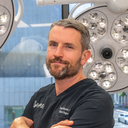Posted underBreast Implants q&a
Can anything be done to stop my breast implant from flipping? (Photo)
Hello! I have a breast implant that is always flipping when I sleep. Can anything be done to stop it? I am a pro at flipping it back, but it hurts a little and is annoying. Thanks!
Answers (4)
From board-certified doctors and trusted medical professionals
More Breast Implants Questions
See all Breast Implants Q&AWE SEND PRETTY
EMAILS
What’s trending? Who’s turning heads? Which TikTok myths need busting? We’ve got you. No fluff, no gatekeeping—just real talk. Get our free, unfiltered newsletter.


